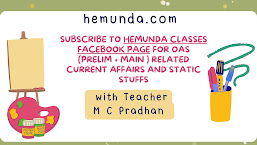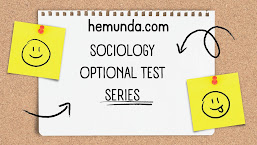Prelims Strategy by Abhijeet Sinha, IAS [AIR 19, CSE 2017]
Hello everyone,
I am Abhijeet Sinha. I have secured 19th Rank in Civil Services Exam 2017 and joined the Indian Administrative Service in 2018. I gave two attempts at CSE and scored good marks in both my prelims: 163 in CSE 2016 and 152.66 in CSE 2017.
My Prelims strategy was slightly different from others. I almost always attempted over 95 questions, even though I barely knew more than 50 questions with full certainty (no blind guesses though ). My focus remained more on deducing the right option by following all kinds of thumb rules, some of which I learned from others and others I developed on my own.
Because of the many variations in nuances, it would be pertinent to inform you beforehand that the strategies mentioned below are slightly risky. What worked for me, may not work for others. There is no single strategy towards success. Also, don’t let these rules interfere with your strong intuition and knowledge. They merely help in deducing answers intelligently when your core knowledge on a particular topic is insufficient. So, please continue to prepare for Prelims thoroughly, practice well and use the following thumb rules as guidelines to help you make intelligent guesses in the exam.
I. Extreme Statements are Likely to be Wrong
Wherever statements that make a sweeping generalization and use words such as every, all, only, etc, they are likely to be false.
Example :
Q. With reference to Manipuri Sankirtana, consider the following statements: (2017)
- It is a song and dance performance.
- Cymbals are the only musical instruments used in the performance.
- It is performed to narrate the life and deeds of Lord Krishna.
Which of the statements given above is/are correct?
(a) 1, 2 and 3
(b) 1 and 3 only
(c) 2 and 3 only
(d) 1 only
Here, because of the word “only”, option 2 could have been easily eliminated.
II. Names and Phrases Hold Clues
There is a reason behind the name of any scheme/person/body/ institution. That can be used to solve many questions
Example :
Q. The term ‘M-STrIPES’ is sometimes seen in the news in the context of (2017)
(a) Captive breeding of Wild Fauna
(b) Maintenance of Tiger Reserves
(c) Indigenous Satellite Navigation System
(d) Security of National Highways
Because of the word ‘Stripes’, there is a natural connection to the tiger that possibly no other options share.
This principle was useful in another question too:
Q. Recognition of ‘Prior Learning Scheme’ is sometimes mentioned in the news with reference to ( 2017)
(a) Certifying the skills acquired by construction workers through traditional channels.
(b) Enrolling the persons in Universities for distance learning programs.
(c) Reserving some skilled jobs to the rural and urban poor in some public sector undertakings.
(d) Certifying the skills acquired by trainees under the National Skill Development Programme.

III. A Lot’s in the Language of A Name
Example :
Q. What is ‘Greased Lightning-10 (GL-10)’, recently in the news? ( 2016)
(a) Electric plane tested by NASA
(b) Solar-powered two-seater aircraft designed by Japan
(c) Space observatory launched by China
(d) Reusable rocket designed by ISRO
Only an English speaking country would name its plane in English.
Q. Consider the following pairs: ( 2017)
Traditions Communities
- Chaliha Sahib Festival — Sindhis
- Nanda Raj Jaat Yatra — Gonds
- Warkari — Santhals
Which of the pairs given above is/are correctly matched?
(a) 1 only
(b) 2 and 3 only
(c) 1 and 3 only
(d) None of the above
Sahib is a name that is commonly used in the Urdu language, common to Sindhis. Using this, we could have eliminated 2 options.
Sometimes, when you break up the root terms of a name, it can give valuable leads. Consider the following questions:
Q. Which one of the following books of ancient India has the love story of the son of the founder of the Sunga dynasty? ( 2016 )
(a) Swapnavasavadatta
(b) Malavikagnimitra
(c) Meghadoota
(d) Ratnavali
Here Malvikangnimitra is clearly made up of 2 terms Malvika + Agnimitra, possibly the name of 1 female and 1 male person, indicative of a love story.
Q. What is/are unique about ‘Kharai Camel’, a breed found in India? ( 2016)
- It is capable of swimming up to three kilometers in seawater.
- It survives by grazing on mangroves.
- It lives in the wild and cannot be domesticated.
Select the correct answer using the code given below.
(a) 1 and 2 only
(b) 3 only
(c) 1 and 3 only
(d) 1, 2 and 3
Here, Kharai seems to be made up of Khara + I and Khara refers to Salty in Hindi which correlates to seawater and this could have been used to find out that options 1 and 2 are possibly correct. Meanwhile, option 3 can be eliminated by using the rule of Extreme.
Similarly, the question on Araghatta ( 2016) could have been solved by realizing that the root term Arag is similar to Irig, that which makes up Irrigation
Q. With reference to the economic history of medieval India, the term Araghatta’ refers to
(a) bonded labor
(b) land grants made to military officers
(c) waterwheel used in the irrigation of land
(d) wasteland and converted to cultivated land
IV. Common Sense is Your Friend
There is no substitute for common sense, and common sense can be utilized to solve many more questions. Consider the following question:
Q. The Global Infrastructure Facility is a/an ( 2017 )
(a) ASEAN initiative to upgrade infrastructure in Asia and financed by credit from the Asian Development Bank.
(b) World Bank collaboration that facilitates the preparation and structuring of complex infrastructure Public-Private Partnerships (PPPs) to enable mobilization of the private sector and institutional investor capital.
(c) Collaboration among the major banks of the world working with the OECD and focused on expanding the set of infrastructure projects that have the potential to mobilize private investment.
(d) UNCTAD funded initiative that seeks to finance and facilitate infrastructure development in the world.
Here, a global body can’t be centered on ASEAN or OECD. Plus since it talks about Infrastructure, it shouldn’t related to UNCTAD which is a trade-centered body.
The summary of the entire discussion above is to practice and think logically. It will help you to solve four to five questions correctly. Almost all my friends, who I have told this strategy have seen improvement in their marks by 5- 10 marks.
At the same time, these strategies are not substituted hard work because for the majority of other questions, your need to get the fundamentals right. Without those basics, all strategies— no matter how so appealing— backfire. I realized the importance of hard work a year too late. I don’t want you to repeat it.
My best wishes,
Abhijeet Sinha






































0 Comments
please do not enter any spam link in the comment box.